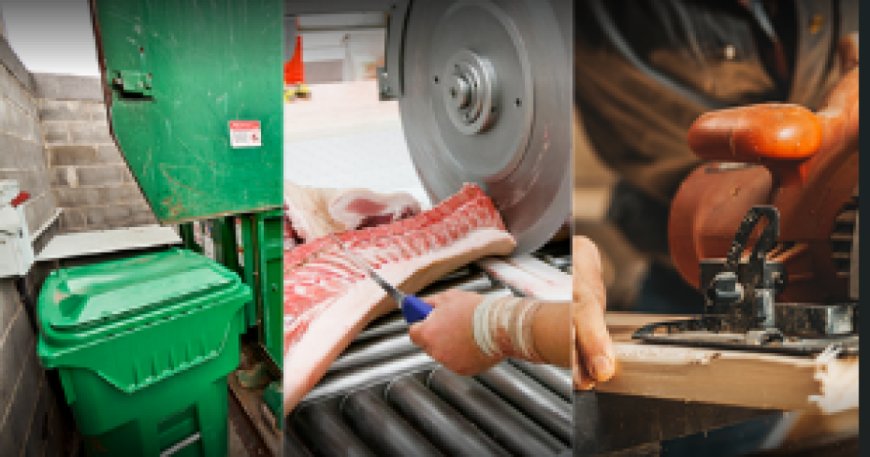Salt Lake City District Office has highest number of cases with child labor law violations in region
Salt Lake City District Office has highest number of cases with child labor law violations in region FOX 13 News Utah

Salt Lake City District Office Leads in Child Labor Violations

Introduction
A recent report from the U.S. Department of Labor’s Regional Office has highlighted the significant number of child labor violations in Salt Lake City’s District Office. This report reveals that the office not only had the highest number of cases with child labor violations, but also collected the most penalties. Child labor law violations not only impact businesses who face fines or other sanctions, but can also put children at risk of dangers in the workplace.
Statistics
The report states that the Salt Lake City office discovered 611 minors working in conditions that violated child labor laws. This number is more than three times the number reported by the next highest office in Dallas.
Penalties Against Chick-Fil-A Restaurants
In September, investigators assessed over $187,000 in civil penalties against two St. George Chick-Fil-A restaurants for employing 237 minors in violation of child labor laws. These violations included requiring minors to clock out during breaks.
Importance of Child Labor Laws
Child labor laws are in place to protect the health and well-being of young workers, as well as their educational opportunities. These laws include provisions that forbid work that interferes with school hours.
Meat Packing Industry Violations
A recent investigation by the Department of Labor’s Wage and Hour Division found children working overnight shifts in 13 meat packing plants owned by nine different companies. However, certain tasks were deemed too dangerous for child labor.
- To reduce the number of child labor violations, the Department of Labor (DOL) has issued a best practices guide for employers.
- The DOL has also provided a dangerous job guide that outlines which jobs are off-limits to children under 18.
Additional Rules for Farm and Ranch Work
Additional rules apply for children under 16 who work on farms and ranches.
SDGs, Targets, and Indicators
| SDGs | Targets | Indicators |
|---|---|---|
| SDG 4: Quality Education | 4.4 By 2030, substantially increase the number of youth and adults who have relevant skills, including technical and vocational skills, for employment, decent jobs, and entrepreneurship | – |
| SDG 8: Decent Work and Economic Growth | 8.7 Take immediate and effective measures to eradicate forced labor, end modern slavery and human trafficking, and secure the prohibition and elimination of the worst forms of child labor, including recruitment and use of child soldiers, and by 2025 end child labor in all its forms | – |
| SDG 16: Peace, Justice, and Strong Institutions | 16.2 End abuse, exploitation, trafficking, and all forms of violence against and torture of children | – |
1. Which SDGs are addressed or connected to the issues highlighted in the article?
SDG 4: Quality Education
The issue of child labor violations is connected to SDG 4 as it aims to protect the educational opportunities of young workers.
SDG 8: Decent Work and Economic Growth
The issue of child labor violations is connected to SDG 8 as it seeks to eradicate child labor in all its forms and ensure decent work for all.
SDG 16: Peace, Justice, and Strong Institutions
The issue of child labor violations is connected to SDG 16 as it aims to end abuse, exploitation, trafficking, and violence against children.
2. What specific targets under those SDGs can be identified based on the article’s content?
Target 4.4
The article highlights the violation of child labor laws, which interferes with the educational opportunities of young workers. Target 4.4 aims to increase the number of youth and adults who have relevant skills for employment and entrepreneurship.
Target 8.7
The article discusses child labor law violations and the need to eradicate child labor in all its forms. Target 8.7 specifically focuses on ending child labor by 2025.
Target 16.2
The article mentions the risks and dangers faced by children working in conditions that violate child labor laws. Target 16.2 aims to end abuse, exploitation, trafficking, and violence against children.
3. Are there any indicators mentioned or implied in the article that can be used to measure progress towards the identified targets?
No specific indicators are mentioned or implied in the article that can be used to measure progress towards the identified targets.
SDGs, Targets, and Indicators
| SDGs | Targets | Indicators |
|---|---|---|
| SDG 4: Quality Education | 4.4 By 2030, substantially increase the number of youth and adults who have relevant skills, including technical and vocational skills, for employment, decent jobs, and entrepreneurship | – |
| SDG 8: Decent Work and Economic Growth | 8.7 Take immediate and effective measures to eradicate forced labor, end modern slavery and human trafficking, and secure the prohibition and elimination of the worst forms of child labor, including recruitment and use of child soldiers, and by 2025 end child labor in all its forms | – |
| SDG 16: Peace, Justice, and Strong Institutions | 16.2 End abuse, exploitation, trafficking, and all forms of violence against and torture of children | – |
Behold! This splendid article springs forth from the wellspring of knowledge, shaped by a wondrous proprietary AI technology that delved into a vast ocean of data, illuminating the path towards the Sustainable Development Goals. Remember that all rights are reserved by SDG Investors LLC, empowering us to champion progress together.
Source: fox13now.com

Join us, as fellow seekers of change, on a transformative journey at https://sdgtalks.ai/welcome, where you can become a member and actively contribute to shaping a brighter future.







